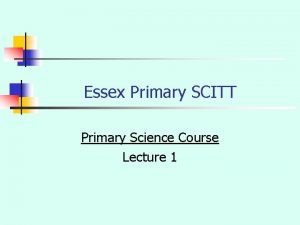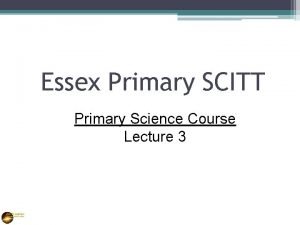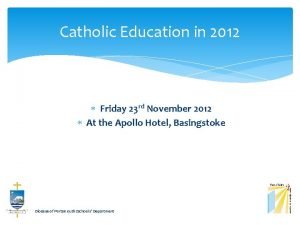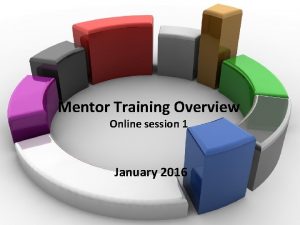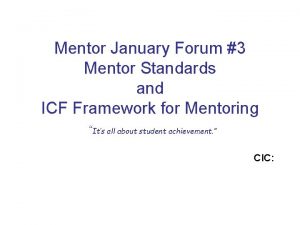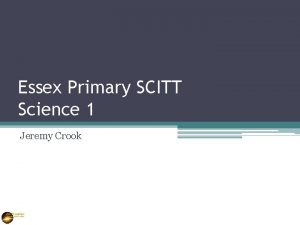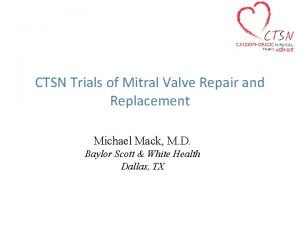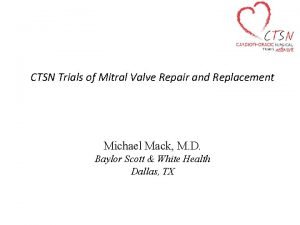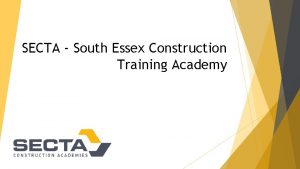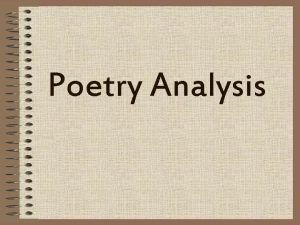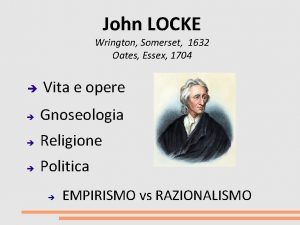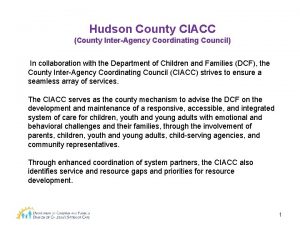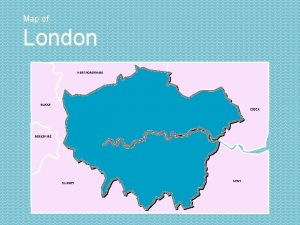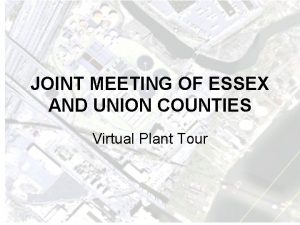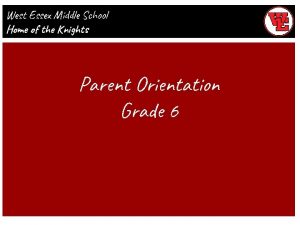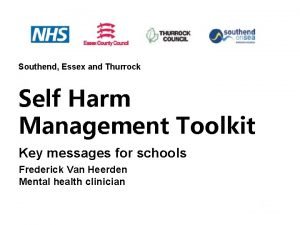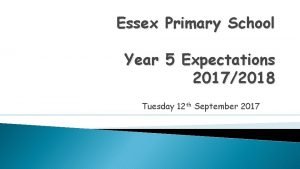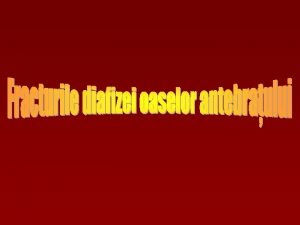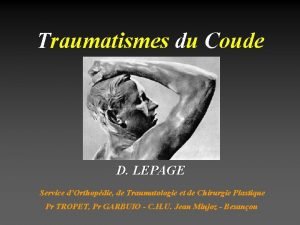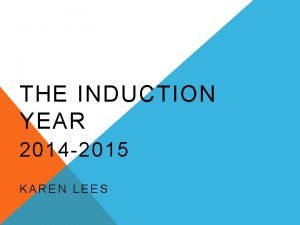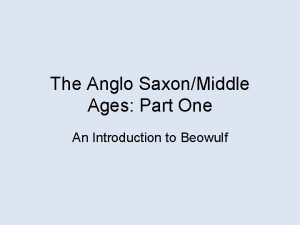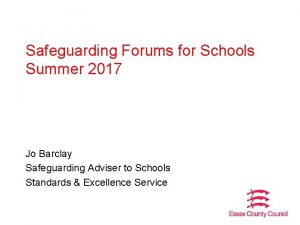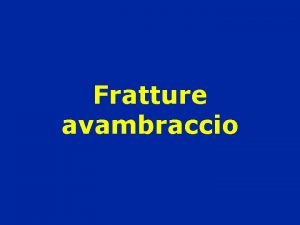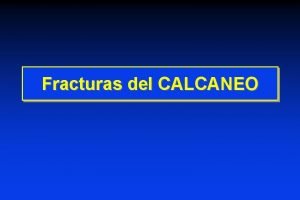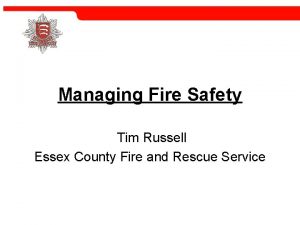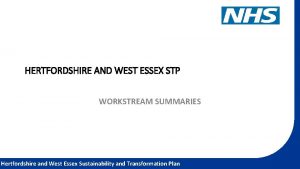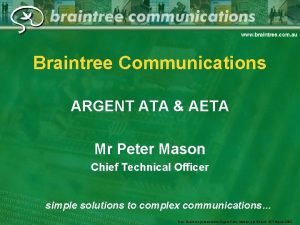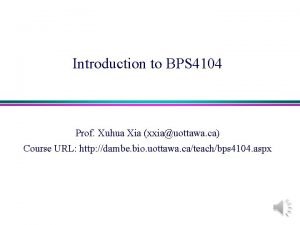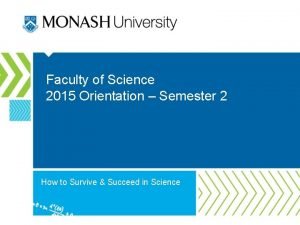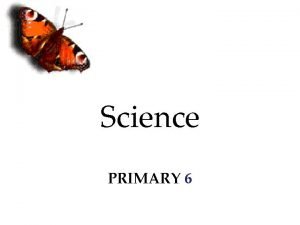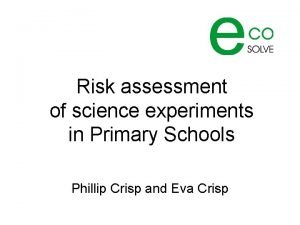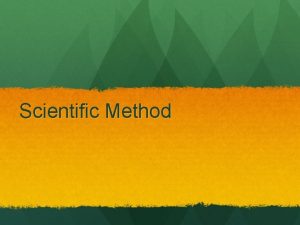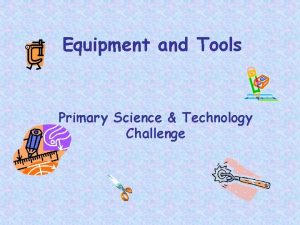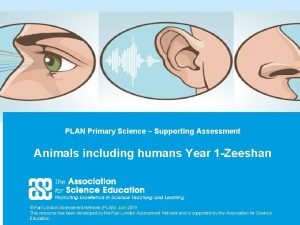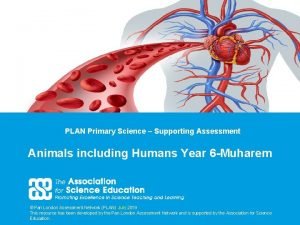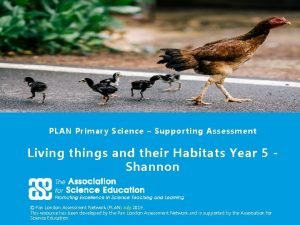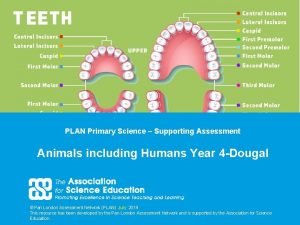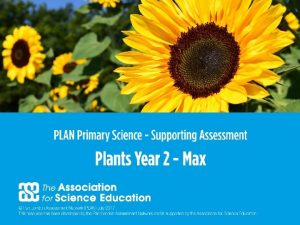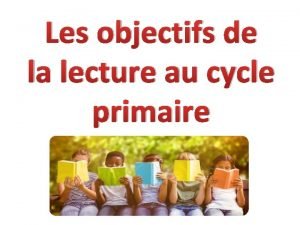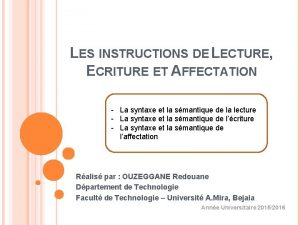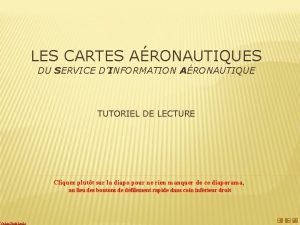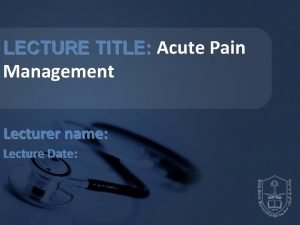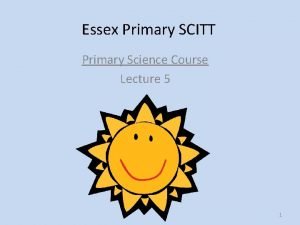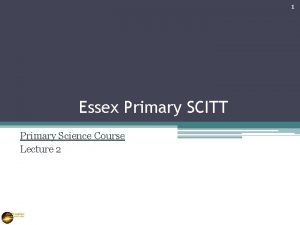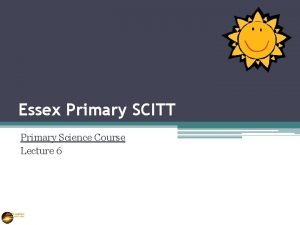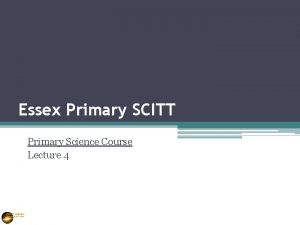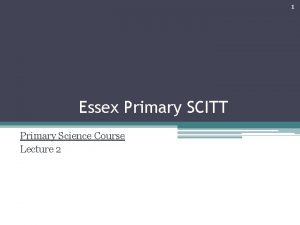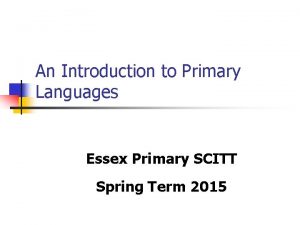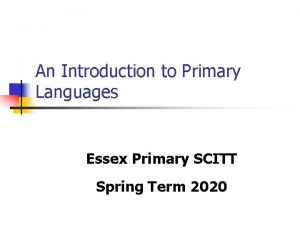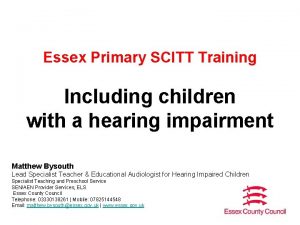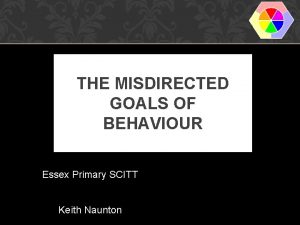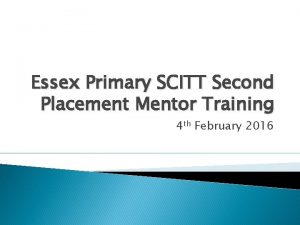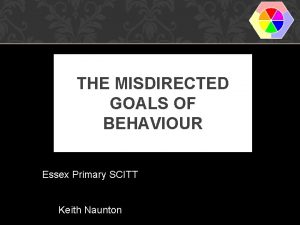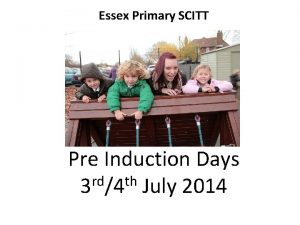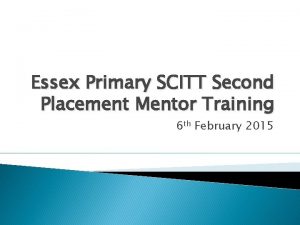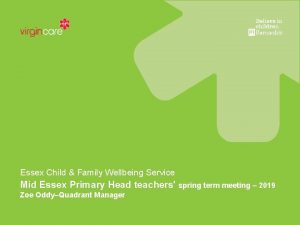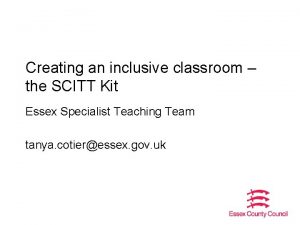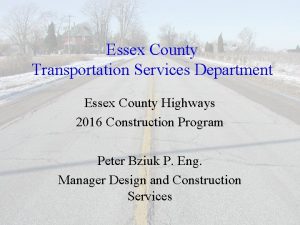Essex Primary SCITT Primary Science Course Lecture 1


































































































- Slides: 98

Essex Primary SCITT Primary Science Course Lecture 1

Jeremy Crook Contact details jnc. edu@gmail. com

Science – what do you think? • Illustrate your name card with your view of science. • You have 1 minute to look at your partner’s card and find out as much about their view of science as you can by questioning them.

Aims for the course I To ensure trainees … • have the knowledge, understanding, pedagogy and confidence to teach science successfully in primary schools and excite the children about learning science; • develop knowledge of scientific concepts within EYFS, KS 1, KS 2 and beyond; • have the ability to think like a scientist – question, hypothesise, collect evidence, analyse data, draw supportable conclusions.

Aims for the course II To ensure trainees … • plan meaningful, relevant learning opportunities for the primary classroom that are appropriately matched to children’s levels of knowledge and understanding; • develop a range of teaching strategies to enable them to teach creative, interactive lessons that motivate children to learn; • can reflect on and improve the quality of their teaching and analyse how well children are learning; • develop the attributes, knowledge and understanding, and skills to achieve QTS.

Aims for today • • • Develop a clear understanding of primary science is Understand why we do science in primary schools and know the key elements of primary science Understand how the National Curriculum for Science is structured To explore the different ways we can help primary age children find out about the world and how these can be used in school • To develop trainees’ knowledge and understanding of plants, including: o Investigating plant characteristics and structures; o Exploring the life cycle of a plant, including growth, nutrition and reproduction; o Identifying how plants are adapted to their environment.

What do you think a typical scientist looks like? Draw one …

Famous Scientists…. .

Scientists named in the NC KS 1 Y 2 • John Dunlop - Charles Macintosh - John Mc. Adam KS 2 - Y 5 • David Attenborough (naturalist) • Jane Goodall (primatologist) • William Harvey (physician – blood flow) • Galen (physician - pulse) • Ptolemy (scientist or fraud? ), Alhazen (scientist, mathematician, astrologer), Copernicus (Sun at the centre of the Universe) • Spencer Silver (post-it notes), Ruth Benerito (wash and wear fabrics) KS 2 - Y 6 • Charles Darwin / Alfred Wallace (evolution) • Galileo (scientist / mathematician) • Isaac Newton (physicist) • Carl Linnaeus (Father of taxonomy) • Mary Anning (palaeontologist)

Have you heard of these? • Rosalind Franklin (DNA) • Dian Fossey (primates) • Marie Curie (radiation) • Florence Nightingale (medicine) • Barbara Mc. Clintock (genetics) • Ibn al-Haytham (optics) • George Washington Carver (agriculture) • Benjamin Banneker (astronomy) • Al-Zarrawi (surgery) And many more!

Inspiring 21 st Century Scientists Alice Roberts David Attenborough Dara O Briain's Science Club Brian Cox MYTHBUSTERS


Is science simply a body of facts? Ibn al-Haytham (965 -1040) was a pioneering scientist thinker who made important contributions to the understanding of vision, optics and light) is known to have said: “If learning the truth is the scientist’s goal … then he must make himself the enemy of all that he reads. ” What does he mean by this?

A historical perspective We can only believe something is true until the time we find out that it is not. Oliver Cromwell 1599 -1658

Do ‘facts’ ever change? In science, as in life, we can rarely say that something will definitely happen. However, we can say for certain that man will never land on the moon. 1930 s encyclopaedia

Is this true?

If it’s not just facts what else is it? Any physical theory is always provisional, in the sense that it is only a hypothesis; you can never prove it. No matter how many times the results of experiments agree with some theory, you can never be sure the next time the result will not contradict theory. On the other hand you can disprove theory by finding even a single observation that disagreed with the predictions of theory. Steven Hawking

Why must science be an important part of the primary school curriculum? • Read the quotes explaining the importance of science and consider the other things we have discussed and write a one sentence justification for its place in the primary curriculum to share with the group.

The Importance of science Science stimulates and excites pupils’ curiosity about phenomena and events in the world around them. It also satisfies this curiosity with knowledge. Because science links direct practical experience with ideas, it can engage learners at many different levels. Scientific method is about developing and evaluating explanations through experimental evidence and modelling. This is a spur to critical and creative thought. Science The National Curriculum for England Df. EE 2000

What are the most important aspects to consider when teaching primary science?

Are these important? • Engagement – what makes a rocket fly? • Discussion – with class/partner/peers • Explanation and Application of prior knowledge – draw an annotated diagram to show your thinking • Practical Activity – Blast off! • Analysis and Assessment – Talk Partners – discussion with teacher – review your diagram. What was accurate, what wasn’t? • What is your new thinking? This is learning.

Rocket science explained • http: //www. bbc. co. uk/guides/zqcmvcw? int c_type=promo&intc_location=orb_promo_foo ter&intc_campaign=iwonder_rocket&intc_lin kname=homepage_b

How could you write the rocket activity as a lesson plan?

National Curriculum - Forces Y 3 - Pupils should be taught to: • compare how things move on different surfaces • notice that some forces need contact between two objects Y 5 - Pupils should be taught to: • explain that unsupported objects fall towards the Earth because of the force of gravity acting between the Earth and the falling object • identify the effects of air resistance, water resistance and friction, that act between moving surfaces

What makes great science lessons? • Talk partner – Read the Ofsted summary report ‘Maintaining Curiosity’. What do Ofsted think makes great science? • Reflection – thinking about all we have done and discussed so far, what must be in your science lessons?

National Curriculum Science Purpose of study A high-quality science education provides the foundations for understanding the world through the specific disciplines of biology, chemistry and physics. Science has changed our lives and is vital to the world’s future prosperity, and all pupils should be taught essential aspects of the knowledge, methods, processes and uses of science. Through building up a body of key foundational knowledge and concepts, pupils should be encouraged to recognise the power of rational explanation and develop a sense of excitement and curiosity about natural phenomena. They should be encouraged to understand how science can be used to explain what is occurring, predict how things will behave, and analyse causes.

National Curriculum – Aims The national curriculum for science aims to ensure that all pupils: • develop scientific knowledge and conceptual understanding through the specific disciplines of biology, chemistry and physics • develop understanding of the nature, processes and methods of science through different types of science enquiries that help them to answer scientific questions about the world around them • are equipped with the scientific knowledge required to understand the uses and implications of science, today and for the future.

Working scientifically – Years 1 and 2 Pupils should be taught to use the following practical scientific methods, processes and skills through the teaching of the programme of study content: • asking simple questions and recognising that they can be answered in different ways • observing closely, using simple equipment • performing simple tests • identifying and classifying • using their observations and ideas to suggest answers to questions • gathering and recording data to help in answering questions.

Working scientifically – Years 3 and 4 Pupils should be taught to use the following practical scientific methods, processes and skills through the teaching of the programme of study content: • asking relevant questions and using different types of scientific enquiries to answer them • setting up simple practical enquiries, comparative and fair tests • making systematic and careful observations and, where appropriate, taking accurate measurements using standard units, using a range of equipment, including thermometers and data loggers • gathering, recording, classifying and presenting data in a variety of ways to help in answering questions.

Working scientifically – Years 3 and 4 • recording findings using simple scientific language, drawings, labelled diagrams, keys, bar charts, and tables • reporting on findings from enquiries, including oral and written explanations, displays or presentations of results and conclusions • using results to draw simple conclusions, make predictions for new values, suggest improvements and raise further questions • identifying differences, similarities or changes related to simple scientific ideas and processes • using straightforward scientific evidence to answer questions or to support their findings.

Working scientifically – Years 5 and 6 Pupils should be taught to use the following practical scientific methods, processes and skills through the teaching of the programme of study content: • planning different types of scientific enquiries to answer questions, including recognising and controlling variables where necessary • taking measurements, using a range of scientific equipment, with increasing accuracy and precision, taking repeat readings when appropriate • recording data and results of increasing complexity using scientific diagrams and labels, classification keys, tables, scatter graphs, bar and line graphs

Working scientifically – Years 5 and 6 • using test results to make predictions to set up further comparative and fair tests • reporting and presenting findings from enquiries, including conclusions, causal relationships and explanations of and degree of trust in results, in oral and written forms such as displays and other presentations • identifying scientific evidence that has been used to support or refute ideas or arguments.

Attitudes Not explicitly stated in the National Curriculum Curiosity Respect for evidence Willingness to tolerate uncertainty Critical reflection Perseverance Creativity and inventiveness Open mindedness Sensitivity to the living and non-living environment • Co-operation with others • •

Plants

Cells – building blocks of life • The cell is the fundamental unit that makes up living things. • Some organisms, such as the Amoeba, consist of just one cell that must carry out all the functions of living things by itself. • Many organisms, both plants and animals, are made up of many cells to make one living thing. • The functions of living things can be shared out to specific cells or groups of cells within the organism.

What’s in a plant cell? (2 D)

WHAT’S IN A PLANT CELL? (3 D)

Cell Membrane I • Cell membrane ▫ This barrier keeps the cell contents together. ▫ It controls what enters and what leaves the cell. ▫ The membrane is said to be semi or more accurately selectively permeable. This means that some things can pass through the membrane but not others.

Cell membrane II • Water can move freely through the cell membrane by a process known as osmosis. • In osmosis, there is the movement of water from a weak solution (one which has few substances dissolved in it) to a more concentrated one through a semi-permeable membrane until equilibrium is reached. • Cells can push particles in the opposite direction, from high concentration to low, but it will take energy from the cell to do this.

Cell Wall • Cellulose cell wall ▫ This provides additional support. It is fully permeable. • Chloroplasts ▫ These are only found in plant cells. They contain the green pigment, Chlorophyll, which absorbs light energy. This is then converted into chemical energy so that carbon dioxide and water can be converted into glucose.

Specialised cells, organs and systems • Cells are shaped according to function and become specialised • Groups of cells with similar structure and function are called tissue e. g. xylem and phloem tissues in plants. • Tissues working together form an organ e. g. leaf. • Organs can work together to form an organ system e. g. The shoot system is above ground and includes the organs such as leaves, buds, stems, flowers (if the plant has any), and fruits (if the plant has any).

Plants Y 1 • identify and name a variety of common wild and garden plants, including deciduous and evergreen trees • identify and describe the basic structure of a variety of common flowering plants, including trees. Y 2 • observe and describe how seeds and bulbs grow into mature plants • find out and describe how plants need water, light and a suitable temperature to grow and stay healthy.

Seeds • How many ways can you find to sort these? • Which approaches are linked to the science of plants? • How can you use: ▫ ▫ Simple chart Carroll diagram Venn diagram Tree diagram

Pea Onion Radish Pepper Bush bean Leak

Germination Seed germination begins when the seed takes in water rapidly, causing the inner layers to swell and split the seed coat and other coverings. The radicle emerges and starts its downward growth into the soil. In the bean seed the hypocotyl elongates and straightens, raising the cotyledons above the ground. As the epicotyl begins to lengthen and straighten, the first leaves, called plumules, emerge.

Bean Seeds • These are ideal seeds for growing in the classroom. • Study the bean seed. Draw and label all the features you can see. • Which ones are related to the bean seed germinating?

Growing beans in class Bean seeds are easy to grow with a jam jar (be careful the glass doesn’t break), some absorbent kitchen paper, and a bean!

Seed germination Video is an invaluable way of explaining and capturing the germination process. http: //www. youtube. com/watch? v=3 Ij 1 e. W_gsr. M http: //www. youtube. com/watch? v=G 2 Ru. Vxdr 0 m. A

Growth • Growth from seed uses stored energy. • There is only sufficient energy stored in the seed to enable it to germinate and produce its first set of leaves. • Once a plant has leaves it can produce its own food by photosynthesising.

Photosynthesis • Photosynthesis can be summarised in words as follows: Carbon dioxide + Water + energy from sunlight Glucose + Oxygen • Or as a formula: 6 CO 2 + 6 H 2 O + energy from sunlight C 6 H 12 O 6 + 6 O 2 • Create a simple role play to demonstrate this process.

Photosynthesis or respiration? • Plants respire with a chemical reaction very similar to that of respiring animals where sugar is combined with oxygen to release energy, water and carbon dioxide. • At night plants do not photosynthesise so they produce more carbon dioxide than oxygen through the process of respiration.

Plant functions Y 3 • identify and describe the functions of different parts of flowering plants: roots, stem/trunk, leaves and flowers • explore the requirements of plants for life and growth (air, light, water, nutrients from soil, and room to grow) and how they vary from plant to plant • investigate the way in which water is transported within plants • explore the part that flowers play in the life cycle of flowering plants, including pollination, seed formation and seed dispersal.

Parts of a plant • Collect a plant. • Discuss your initial observations? • Draw and label a diagram. Include as much detail as possible. • What does each part of the plant do? ▫ Roots ▫ Stem ▫ Leaves • What part of the plant is missing that we would expect to see if it continued to grow?

Can you complete the diagram?

4 flap plant booklet

Transpiration through a plant

Transport in plants • The semi-permeable surface membrane of a cell controls what moves in and out. • Water particles cross the membrane freely. • When a cell is full of water it is said to be turgid, when not it is flaccid. • Phloem tissue conducts food produced in the leaves to the rest of the plant. • Xylem tissue conducts water and mineral salts from the roots. The xylem tissue also gives strength to the stem.

How water enters a plant • Water evaporates from the surface of leaves. • As the water evaporates more is pulled up from the soil because water molecules have strong bonds that cause them to cling together in an unbroken stream from root to shoot tip. • Water enters the plant by osmosis through the root hairs and moves up the xylem vessels to the leaves

Celery – a great transporter • Carefully dissect your celery stick to find the xylem and phloem vessels which are bundled together.

Set this up and return in 3 hours What do you think will happen? Why will it happen?

Sensitivity • Gravity, light, water all influence the way a plant grows. • Plants that respond to light are said to be phototropic. • What evidence do we have that plants are influenced by these things? • https: //www. youtube. com/watch? v=FC 5 e. Bk. DJb. Ms • https: //www. youtube. com/watch? v=t. LYOBi 5 ga. Vs &x-yt-ts=1422579428&x-yt-cl=85114404 • What would happen to a bean plant shut in a shoe box with a small hole in the side of the box?

Plant reproduction Y 5 • describe the life process of reproduction in some plants and animals.

Plant Reproduction • Plants reproduce in 2 ways. ▫ Asexual reproduction which can take a number of forms ▫ Sexual reproduction

Asexual Reproduction • Asexual reproduction needs only one parent, unlike sexual reproduction, which needs two parents. Since there is only one parent, there is no fusion of gametes and no mixing of genetic information. As a result, the offspring are genetically identical to the parent and to each other. They are clones.

Bulbs • Asexual reproduction in plants can take a number of forms. Many plants develop underground food storage organs that later develop into the following year's plants. Potato plants and daffodil plants do this, for example.

Runners • Some plants produce side branches with plantlets on them. The spider plant, Chlorophytum, does this. • Other plants, such as strawberries, produce runners with plantlets on them.

Sexual reproduction What do the parts do?

Sexual II

Sexual Reproduction in Plants • Flowering plants are the dominant plant form on land many reproduce sexually. • The flowers are the reproductive organs. • The anther produces pollen grains which contain the male gametophytes (sperm). For pollination to occur, pollen grains must attach to the stigma of the female reproductive structure (carpel), where the female gametophytes (ovules) are located inside the ovary.

Sexual Reproduction in Plants • After the pollen tube grows through the carpel's style, the nuclei from the pollen grain migrate into the ovule to fertilize the egg cell. • How does pollen reach the ovary? • https: //www. youtube. com/watch? v=0 UEpq 1 W 9 C_E (8: 50 -13: 35) • The ovary, which produced the female gametophyte(s), then grows into a fruit, which surrounds the seed(s). • Plants can self-pollinate, though most crosspollinate.

Transfer of pollen • The sperm cells of a plant are contained in pollen, which clings to animals that visit flowers to feed on nectar or pollen, and is brushed off at the next flower. • Flower nectar is held in special "nectaries" which are various shapes and sizes, and only allow access to insects with particular shaped mouthparts. • This means that certain types of flowers will be visited, and will be pollinated, by specific types of animals, so that pollen from one plant will be carried to another plant of the same species.

How flowers attract animals • Flowers must be able to make use of animals searching for food to transfer their pollen. • From a distance animals are attracted by their bright colour. A brightly coloured flower will stand out from a green background, especially to insects that probably see green as grey. • At closer range, the scent of the flower may further attract the insect. • Other visual cues, such as nectar guides also attract them.

Nectar guides

The bit we can’t see! • In many bee-pollinated flowers, there is a region of low ultraviolet reflectance near the centre of each petal. • This pattern is invisible to humans because our visual spectrum does not extend into the ultraviolet. Bees, however, can detect ultraviolet light. • The contrasting ultraviolet pattern helps a bee quickly locate the flower’s centre. • This adaptation benefits both the flower (more efficient pollination) and the bee (rapid collection of nectar).

What colour flower do insects visit most often? How could you design a fair test to investigate the colour of flower most visited by insects?

Fruit development What are the observable characteristics in common fruits? How do fruits develop? • https: //www. youtube. com/watch? v=bw. Cp. Qf lm. QG 4 • https: //www. youtube. com/watch? v=4 tt. Rg. Mj 7 Pd. Q

Is it a fruit or vegetable? Scientifically speaking, a fruit is a seed-bearing structure that develops from the ovary of a flowering plant, whereas vegetables are all other plant parts, such as roots, leaves and stems. So apples, peaches and, tomatoes are all fruits, while roots such as potatoes and turnips, leaves such as spinach and lettuce, and stems such as celery and broccoli are all vegetables. http: //www. livescience. com/33991 -difference-fruits-vegetables. html

Seed dispersal – Drop and roll • Large, round, heavy fruits drop off the tree when they are ripe. • If they have a tough outer shell, they may roll some distance from the parent plant. The higher up the tree they are, and the larger they are, the further they can roll. • If they have a soft skin, they may break open when they hit the ground and the individual seeds may be scattered. • http: //schoolstube. com/asset/view/id/8 90/code/d 72663

Seed dispersal - explosion • Some plants distribute their seeds by violently ejecting them so that they fall well away from the parent plant. This is explosive dispersal. An example of this is plants which belong to the Pea Family (Leguminosae). https: //www. youtube. com /watch? v=w. OIHzl 2 h 9 a 8

Seed dispersal – wind I • The flower ovary containing the seeds becomes a dry hollow container with one or more openings. The containers are shaken by the wind, scattering the seeds through the openings, dispersing them all around the immediate area.

Seed dispersal – wind II • Feathery hairs help the seed to float on the wind. They can often be carried long distances in this way.

Seed dispersal – wind III • Wing-like outgrowths on the fruit (which contains the seed) make it spin as it falls from the parent plant. This spinning delays its fall so that the wind may carry it some distance away. • Explore paper helicopters!

Seed dispersal – water • The Pond Iris grows in or near freshwater. The seed pods break open when they ripen. If they fall into the water they float away. They can germinate in the water or when they become stranded on mud.

Seed dispersal – animal • Plants such as burdock have hooks to which the seed is attached. These hooks get caught in the fur of mammals. At some point the seed will fall. If conditions are right the seed will germinate and grow into a new plant.

Seed dispersal – animal II • The berries are eaten by birds many animals. The seed inside the fruit passes through the gut of the animal as it can not be digested. The seeds are expelled in the droppings of the animal. Some seeds dispersed in this way cannot germinate unless they have passed through the digestive system of an animal.

Which berries are easiest to spot? Take 10 ‘berries’ of each colour. One person go outside and place the berries in a bush. The partner has 1 minute to collect as many ‘berries’ as possible.

Which colour was most ‘spottable’? Colour of beads Number found in 1 minute Black 10 Brown 6 Green 4 Red 13

Plant Life Cycles A school project • https: //www. youtube. com/watch? v=E 1 xpr_w. Le. S 4

Plant life cycle Germination, pollination, fertilisation and seed dispersal are all stages in the life cycle of plants. Join the labels to the pictures.

Put the stages in the right order

Write a sentence for A - F

Science Task • Identify areas for your own subject knowledge development in science and develop an action plan to support your improvement. • Bring a copy of your action plan to science day 2 for the tutor.

Review of the day • What’s been most useful? • Has there been a suitable balance of activities? • Have you extended your understanding of what primary science is? • Have you extended your knowledge of plants? • What would make the next day better for you?

Essential Reading l l ASE Guide to Primary Science Education, New Edition: Edited by Wynne Harlen Section 1. 1 Why is learning science important in primary schools? Teaching science in the Primary Classroom: A practical guide: Ward, Roden, Hewlett and Foreman Chapter 1 - What is science? National Curriculum for Science Key Stages 1 & 2 (see Essex Teacher Training website). PSR 101 Teaching life processes.

Also worth reading Chapter 6 A view of Learning in Science in Wynne Harlen’s book ‘The Teaching of Science in Primary Schools’ (third edition) Chapter 6 Facing mismatches in the classroom in Osborne and Freyberg’s book ‘Learning in Science’

Very, very useful sites Big ideas in science that underpin all children’s learning l http: //www. nationalstemcentre. org. uk/elibrary/resource/ 11427/principles-and-big-ideas-of-science-education The National STEM Centre houses the UK’s largest collection of a wide range of high-quality support materials. l http: //www. nationalstemcentre. org. uk/primaryscience Free online science CPD for teachers, developed with Imperial College London. l http: //www. reachoutcpd. com/? dm_t=0, 0, 0

Reading (matched to individual needs) l l Be Safe. 3 rd edn. ASE. Johnsey, R. , Peacock, G. , Sharp, J. and Wright, D. Primary Science – Knowledge and Understanding. Chapter 2 ‘Functioning of organisms: Green plants’. Primary School Code of Practice No. 25 has extensive Health and Safety guidance. Rutledge, N. (2010) Primary Science: Teaching the Tricky Bits. Open University Press.

Also useful Sites created by Danny Nicholson l www. scittscience. co. uk l www. whiteboardblog. co. uk
 Essex primary scitt
Essex primary scitt Essex primary scitt
Essex primary scitt Essex primary scitt
Essex primary scitt West essex primary care trust
West essex primary care trust Pcp scitt
Pcp scitt Scitt moir
Scitt moir Scitt moir
Scitt moir Jeremy crook
Jeremy crook Ctsn scitt
Ctsn scitt Ctsn scitt
Ctsn scitt 01:640:244 lecture notes - lecture 15: plat, idah, farad
01:640:244 lecture notes - lecture 15: plat, idah, farad Whats your favorite subject
Whats your favorite subject English bond t junction
English bond t junction Course title and course number
Course title and course number Chaine parallèle muscle
Chaine parallèle muscle Physical science lecture notes
Physical science lecture notes Construction training essex
Construction training essex Iosh training essex
Iosh training essex American hero poem
American hero poem Oates essex
Oates essex Ciacc essex county
Ciacc essex county Essex steps
Essex steps Effective support for families in essex
Effective support for families in essex Essex wessex mercia northumbria
Essex wessex mercia northumbria American hero essex hemphill
American hero essex hemphill Family solutions essex
Family solutions essex Effective support for children and families in essex
Effective support for children and families in essex Hudson essex passaic soil conservation district
Hudson essex passaic soil conservation district Essex to berkshire
Essex to berkshire Joint meeting essex and union county
Joint meeting essex and union county West essex middle school
West essex middle school Self harm toolkit essex
Self harm toolkit essex 7 minute safeguarding briefings essex
7 minute safeguarding briefings essex Fairplay house essex
Fairplay house essex Essexinfolink
Essexinfolink Fractura pouteau-colles
Fractura pouteau-colles Fracture cupule radiale
Fracture cupule radiale Nqt manager essex
Nqt manager essex Beowulf time period
Beowulf time period Jo barclay essex safeguarding
Jo barclay essex safeguarding Essex infolink safeguarding
Essex infolink safeguarding Pronazione avambraccio
Pronazione avambraccio Yeso de graffin
Yeso de graffin Jo barclay essex safeguarding
Jo barclay essex safeguarding Fire risk assessment essex
Fire risk assessment essex Fha connection
Fha connection Herts and west essex stp
Herts and west essex stp Ata carnet essex
Ata carnet essex Xuhua xia rate my prof
Xuhua xia rate my prof Computer science monash course map
Computer science monash course map Natural vs social science
Natural vs social science Branches of natural science
Branches of natural science Natural and physical science
Natural and physical science Applied science vs pure science
Applied science vs pure science Anthropology vs sociology
Anthropology vs sociology Science fusion introduction to science and technology
Science fusion introduction to science and technology Why environmental science is an interdisciplinary science
Why environmental science is an interdisciplinary science Windcube
Windcube Hard and soft science
Hard and soft science Elementary science class 5
Elementary science class 5 Science for primary 6
Science for primary 6 Science risk assessment primary school
Science risk assessment primary school What is the primary goal of science
What is the primary goal of science Primary science equipment
Primary science equipment Plan primary science
Plan primary science Plan primary science
Plan primary science Plan primary science
Plan primary science Plan primary science
Plan primary science Plan primary science
Plan primary science The primary pigment colors are ____.
The primary pigment colors are ____. Project procurement management lecture notes
Project procurement management lecture notes Lecture about sport
Lecture about sport Lecture on healthy lifestyle
Lecture on healthy lifestyle Makeup lecture meaning
Makeup lecture meaning Meaning of this
Meaning of this Randy pausch the last lecture summary
Randy pausch the last lecture summary Tensorflow lecture
Tensorflow lecture Theology proper lecture notes
Theology proper lecture notes Strategic management lecture
Strategic management lecture Geology lecture series
Geology lecture series Social psychology lecture
Social psychology lecture In text citation for a lecture
In text citation for a lecture Lecture notes on public sector accounting ghana pdf
Lecture notes on public sector accounting ghana pdf 4 p's of management spectrum
4 p's of management spectrum Eurocode reinforcement detailing
Eurocode reinforcement detailing Magnetism
Magnetism Physics 111 lecture notes
Physics 111 lecture notes What is a harmonic wave in physics
What is a harmonic wave in physics Power system dynamics and stability lecture notes
Power system dynamics and stability lecture notes Natural language processing nlp - theory lecture
Natural language processing nlp - theory lecture Microbial physiology notes
Microbial physiology notes Ppt on mechatronics
Ppt on mechatronics Limits fits and tolerances
Limits fits and tolerances Didactique de la lecture au primaire
Didactique de la lecture au primaire Instruction de lecture et d'écriture
Instruction de lecture et d'écriture Aronautique
Aronautique Lecture title
Lecture title Slidetodoc.com
Slidetodoc.com Financial engineering notes
Financial engineering notes
